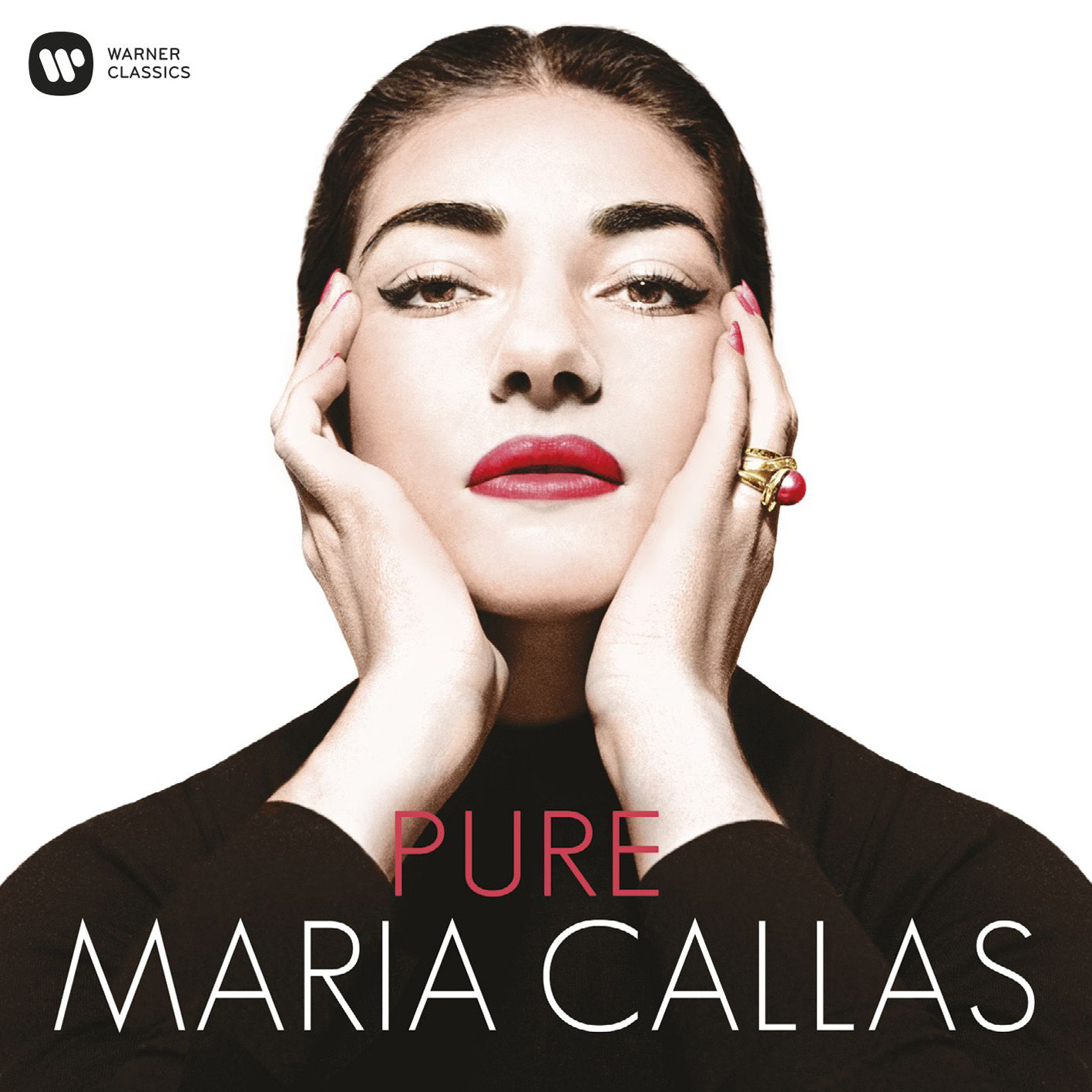
Maria Callas – Pure (2014)
FLAC (tracks) 24-bit/96 kHz | Time – 77:54 minutes | 1,11 GB | Genre: Classical
Studio Master, Official Digital Download – Source: Qobuz | Cover & Booklet | © Warner Classics
Opera singers come and go, but just a few – the legends – live on. And Maria Callas was the greatest legend of them all, though not just for the wonder of her voice. She changed the way people thought about opera, but she also became famous as the glamorous celebrity who fell in love with Aristotle Onassis, leaving her elderly husband to live with him on his yacht Christina and enjoy the high life with the international jet set.
Of course it ended badly. She lived her life like one of her own tragic heroines who (as women tend to do in opera) sing, suffer and die. And her own death came at just 53, after a dazzling but short career that took in heavy roles alongside decorative, nightingale-like ones – ignoring the established rules of vocal health and probably explaining why her voice finally gave out as it did.
But in that time she did extraordinary things, using the muscle of those heavy heroines to empower the nightingales with strength and depth of feeling nobody had thought to offer them before. She gave them credibility as drama. Her performances were absolute and self-exposing: she held nothing back. And she was even tougher on herself than she could be on others – which is why her voice was never quite the flawless instrument singers are meant to cultivate. Her personality was far too volatile and too self-sacrificing in its love affair with risk.
In the mythology of opera, though, that’s what the audience demands. We want the diva to be both a goddess and a slave: to give her life for art. We thrill to the dimension of that sacrifice. And Callas dutifully obliged.
Tracklist:
01 – Carmen, Act 1: “L’amour est un oiseau rebelle” (Carmen, Chorus) [Habanera]02 – Norma, Act 1: “Casta diva” (Norma, Chorus)
03 – Gianni Schicchi, Act 1: “O mio babbino caro” (Lauretta)
04 – La Wally, Act 1: “Ebben?…Ne andrò lontana” (Wally)
05 – La Traviata, Act 1: “Ah fors’e lui” (Violetta)
06 – La Traviata, Act 1: “Sempre libera” (Violetta, Alfredo)
07 – Tosca, Act 2: “Vissi d’arte” (Tosca)
08 – Madama Butterfly, Act 2: “Un bel di vedremo” (Butterfly)
09 – Andrea Chénier, Act 3: “La mamma morta” (Maddalena)
10 – La Bohème, Act 3: “Donde lieta uscì al tuo grido d’amore” (Mimì)
11 – Adriana Lecouvreur, Act 1: “Ecco: respiro appena…Io son l’umile ancella” (Adriana Lecouvreur)
12 – Lucia di Lammermoor, Act 3: “Il dolce suono … Ardon gli incensi” (Lucia, Raimondo, Normanno, Chorus)
13 – Il Trovatore, Act 4: “D’amor sull’ali rosee” (Leonora)
14 – Otello, Act 4: “Ave Maria” (Desdemona)
15 – Il Barbiere di Siviglia, Act 1: “Una voce poco fa” (Rosina)
16 – Orphée et Eurydice, Act 4: “J’ai perdu mon Eurydice” (Orfeo)
17 – Samson et Dalila, Act 2: “Mon coeur s’ouvre à ta voix” (Dalila)
18 – Carmen, Act 2: “Les tringles des sistres tintaient” (Camen, Frasquita, Mercédès)
With high definition, you’ll be able to experience sounds which have only been heard up till now by people who were either present at Callas’s recording sessions, or who had access to the unique master tape,’ says Allan Ramsay, one of the team of engineers responsible for this remastering of all Callas’s studio recordings. ‘And digital editing software has become so sophisticated that we can correct problems which were insoluble even a few years ago. The listener will experience something as close as possible to the actual recording sessions.’
It sounds miraculous. Ramsay describes his aim for the project:
“The best way to explain a high-definition remastering is to use the metaphor of a digital camera,’ he says. ‘Imagine the difference in image clarity between a 1-megapixel camera and a 12-megapixel camera. It gives an idea of the resolution we’re now able to achieve. A cymbal crash, for instance, creates frequencies that are audible to the human ear, but it also creates supersonic harmonics, which are not. Those harmonics can still be experienced as a vibration in the air, even if you can’t hear them. Until now it has not been possible to reproduce those frequencies for the public, as the possible range on a CD [which operates at 44.1 kHz and 16 bits] is too low. With high-definition, which can operate at 96 kHz and 24 bits, we’re extending the range higher, and with more detail, than ever before. You’ll experience that supersonic cymbal-crash almost as if you had been in the recording studio when it was made.”
Download:
mqs.link_MariaCallas_Pure_Maria_Callas_19541964.part1.rar
mqs.link_MariaCallas_Pure_Maria_Callas_19541964.part2.rar










![Maria Callas, Tullio Serafin, Orchestra del Teatro della Scala di Milano - Maria Callas: 90 Opera Arias (2023) [FLAC 24bit/96kHz] Maria Callas, Tullio Serafin, Orchestra del Teatro della Scala di Milano - Maria Callas: 90 Opera Arias (2023) [FLAC 24bit/96kHz]](https://imghd.xyz/images/2023/04/11/ew4q8us94d10b_600.jpg)
![Maria Callas - The Best of Maria Callas - Her Greatest Roles (2023) [FLAC 24bit/96kHz] Maria Callas - The Best of Maria Callas - Her Greatest Roles (2023) [FLAC 24bit/96kHz]](https://imghd.xyz/images/2023/11/05/xwygfo9yp1z8b_600.jpg)
![Maria Callas - Remastered The Complete Studio Recordings 1949-1969 (2014) [Qobuz FLAC 24bit/96kHz] Maria Callas - Remastered The Complete Studio Recordings 1949-1969 (2014) [Qobuz FLAC 24bit/96kHz]](https://getimg.link/images/imgimgimg/uploads/2018/12/Vw7IHlv-1.jpg)
![Maria Callas - The Best of Maria Callas - Her Greatest Roles (2023) [24Bit-96kHz] FLAC [PMEDIA] ⭐️ Maria Callas - The Best of Maria Callas - Her Greatest Roles (2023) [24Bit-96kHz] FLAC [PMEDIA] ⭐️](https://imageurl.xyz/images/2023/09/26/MariaCallasTheBestofMariaCallasHerGreatestRoles202324Bit96kHzFLACPMEDIA.jpg)
![Maria Callas - Giordano: Andrea Chénier (1955 - Milan) - Callas Live Remastered (2017) [FLAC 24bit/44,1kHz] Maria Callas - Giordano: Andrea Chénier (1955 - Milan) - Callas Live Remastered (2017) [FLAC 24bit/44,1kHz]](https://i0.wp.com/imghd.xyz/images/2022/02/10/0190295767259_600.jpg?resize=500%2C500&ssl=1)
![Maria Callas - The New Sound of Maria Callas (2003/2021) [FLAC 24bit/96kHz] Maria Callas - The New Sound of Maria Callas (2003/2021) [FLAC 24bit/96kHz]](https://mqs.link/wp-content/uploads/2022/04/xA7VzFp.jpg)
![Maria Callas - Puccini: Madama Butterfly by Maria Callas (1955/2023) [FLAC 24bit/96kHz] Maria Callas - Puccini: Madama Butterfly by Maria Callas (1955/2023) [FLAC 24bit/96kHz]](https://imghd.xyz/images/2023/11/26/00a456ea.jpg)
![Maria Callas, Orchestra Sinfonica di Torino della RAI, Gabriele Santini - Verdi: La traviata (2023) [FLAC 24bit/96kHz] Maria Callas, Orchestra Sinfonica di Torino della RAI, Gabriele Santini - Verdi: La traviata (2023) [FLAC 24bit/96kHz]](https://imghd.xyz/images/2023/10/15/00a327a5.jpg)
![Maria Callas, Orchestra del Teatro della Scala di Milano, Herbert von Karajan - Puccini: Madama Butterfly (2023) [FLAC 24bit/96kHz] Maria Callas, Orchestra del Teatro della Scala di Milano, Herbert von Karajan - Puccini: Madama Butterfly (2023) [FLAC 24bit/96kHz]](https://imghd.xyz/images/2023/07/28/zofv2cluc8p3a_600.jpg)
![Maria Callas - Ponchielli: La Gioconda (1952 - Votto) - Callas Remastered (1987/2022) [FLAC 24bit/96kHz] Maria Callas - Ponchielli: La Gioconda (1952 - Votto) - Callas Remastered (1987/2022) [FLAC 24bit/96kHz]](https://imghd.xyz/images/2023/01/28/0825646254361_600.jpg)
![Maria Callas - Bellini: Norma (1954 - Serafin) - Callas Remastered (2014/2022) [FLAC 24bit/96kHz] Maria Callas - Bellini: Norma (1954 - Serafin) - Callas Remastered (2014/2022) [FLAC 24bit/96kHz]](https://imghd.xyz/images/2023/01/28/0825646254293_600.jpg)
![Maria Callas - Puccini: Tosca by Maria Callas (2022) [FLAC 24bit/96kHz] Maria Callas - Puccini: Tosca by Maria Callas (2022) [FLAC 24bit/96kHz]](https://imghd.xyz/images/2022/12/09/wyxh89tnjwkua_600.jpg)
![Maria Callas - Bellini: Norma (2023) [FLAC 24bit/96kHz] Maria Callas - Bellini: Norma (2023) [FLAC 24bit/96kHz]](https://imghd.xyz/images/2023/11/21/00a40c0c.jpg)
![Maria Callas - Maria Callas: 50 Most Beautiful Opera Arias (2015) [FLAC 24bit/96kHz] Maria Callas - Maria Callas: 50 Most Beautiful Opera Arias (2015) [FLAC 24bit/96kHz]](https://imghd.xyz/images/2022/09/06/3614592944986_600.jpg)
![Maria Callas - Ponchielli: La Gioconda, Op. 9 (2023) [FLAC 24bit/96kHz] Maria Callas - Ponchielli: La Gioconda, Op. 9 (2023) [FLAC 24bit/96kHz]](https://imghd.xyz/images/2023/02/17/nlb3lg71vgjqc_600.jpg)